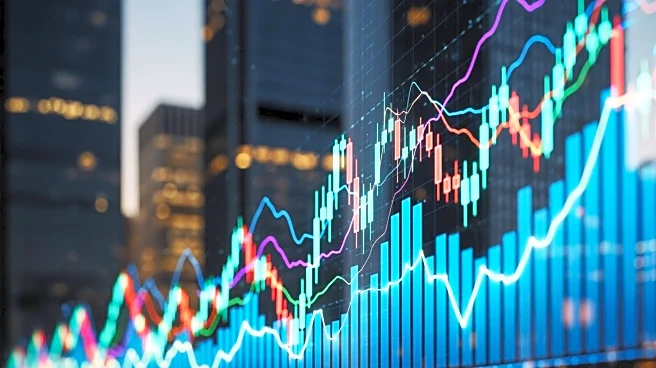What's Happening?
Gold prices have reached unprecedented levels, topping $4,300 per troy ounce this week, as investors seek safe havens amid deepening economic uncertainty. The surge in gold prices is attributed to several
factors, including the ongoing U.S. government shutdown and trade tensions, particularly with China. President Trump's trade policies, including tariffs, have strained global economies, contributing to the rise in gold prices. Additionally, the prospect of lower interest rates has made gold a more attractive investment. Gold futures have increased nearly 60% since the start of 2025, while silver futures have seen a 70% rise. The demand for gold is also driven by geopolitical tensions and the weakening U.S. dollar.
Why It's Important?
The surge in gold prices reflects broader economic anxieties and uncertainties affecting the U.S. and global markets. As investors turn to gold as a safe haven, it highlights concerns over inflation, job market weaknesses, and the impact of trade policies. The government shutdown exacerbates these issues, delaying key economic data and affecting federal employees. The rising gold prices also have implications for the jewelry industry, with consumers facing higher costs and potential 'sticker shock.' The situation underscores the interconnectedness of economic policies, geopolitical tensions, and market reactions, affecting various stakeholders from investors to consumers.
What's Next?
The future trajectory of gold prices will likely depend on developments in U.S. trade policies, interest rate decisions by the Federal Reserve, and the resolution of the government shutdown. Investors may continue to seek gold as a hedge against economic instability, while businesses and consumers adjust to the changing market dynamics. The environmental and health impacts of increased gold demand, particularly related to mercury use in mining, may also prompt regulatory scrutiny and international cooperation to address these issues.
Beyond the Headlines
The rising demand for gold has environmental and health consequences, particularly due to mercury use in illegal mining. Mercury pollution poses significant risks to ecosystems and human health, highlighting the need for sustainable mining practices. The situation also raises ethical concerns about the impact of economic activities on vulnerable communities and the environment, prompting discussions on responsible investment and consumption.











